Volcan Acatenango hike: A bucket list adventure in Guatemala
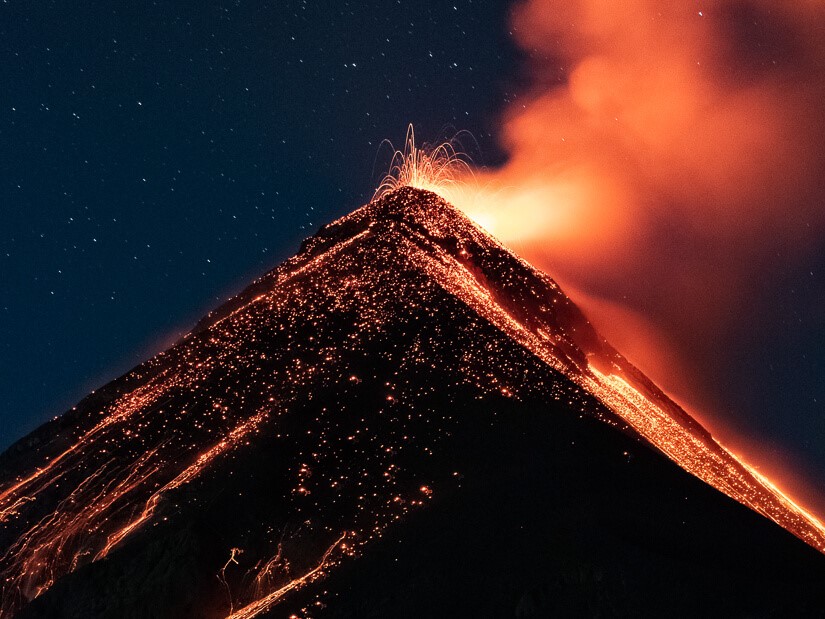
The Acatenango Volcano hike is a must-have experience for every nature lover and adventure seeker visiting Guatemala. It’s one of my all-time favorite hikes and thinking back to those phenomenal views from Acatenango still gives me goosebumps.
The challenging but spectacular hike takes you to the summit of Central America’s third-highest volcano and offers an epic panorama of the Guatemalan highlands. However, the absolute best part of the Acatenango trek is witnessing the eruptions of the neighboring Volcan Fuego.
Seeing the glowing red lava burst into the night sky and hearing the roars of the volcano is a surreal experience which you’ll never forget. It’s a true spectacle of nature that will leave you speechless!
In this post, I’ll cover everything you need to know to plan your Acatenango hike, including the difficulty level, the best time to do it, the best tour options, what to pack and some practical tips from my personal experience of doing this iconic trek.
Disclosure: This article contains affiliate links from which I may make a commission at no additional cost to you if you make a purchase.
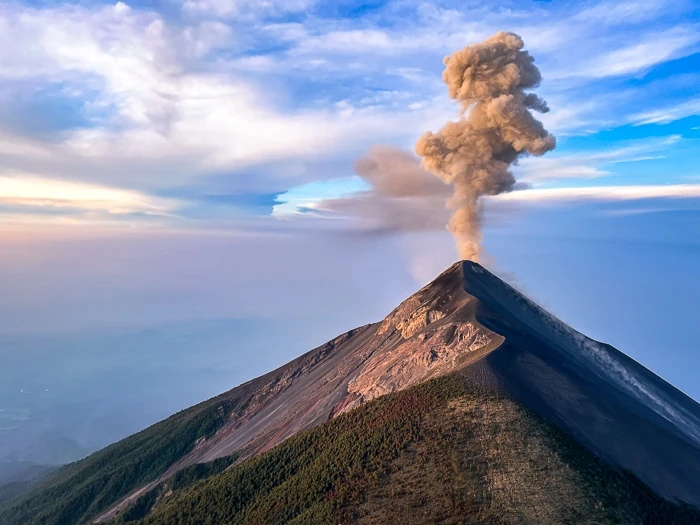
General info about the Acatenango hike
Type of hike: out-and-back
Distance: 17km (10 mi) + 5.5km (3.4 mi) if you also want to hike to Fuego
Difficulty: difficult
Time: 1.5 days
Altitude: 3,976m (13,000 ft)
Elevation gain: 1,600m (5,250ft)
Volcan Acatenango is a 3,976m (13,000 ft) tall stratovolcano near the city of Antigua in southern Guatemala. Although it is technically considered an active volcano, it had its last eruption in 1972 and is currently safe to hike.
Right next to Acatenango sits the majestic Volcan Fuego aka the Volcano of Fire, one of the most active volcanoes in Central America. Fuego has small eruptions about every 15 minutes, which you can watch from a safe distance at Acatenango. It has larger eruptions every 4-5 years and the last one was in May 2023, just a few weeks after our hike.
During the day, you can see Fuego Volcano spew out tall columns of ash and smoke. However, the real show starts at night when you can watch the luminous red lava burst out of its crater and trickle down its sides. It’s a truly incredible sight and for many travelers (including myself), it ends up being one of the highlights of their Guatemala trip.
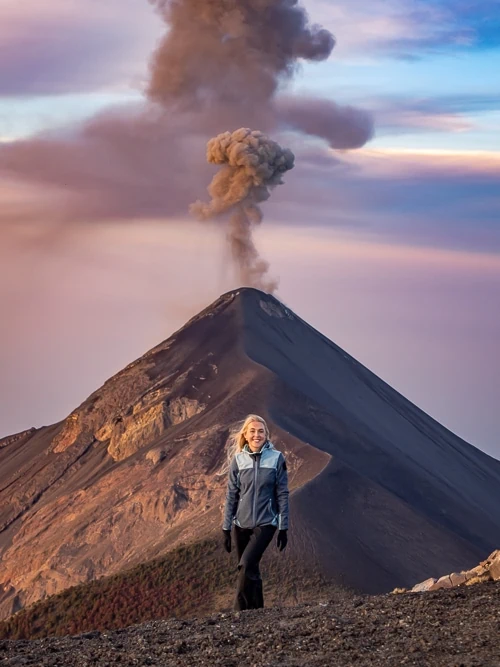
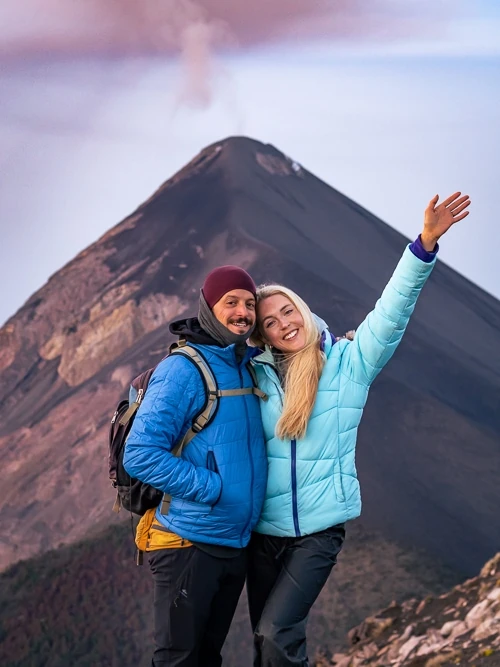
How to hike Acatenango
The Volcan Acatenango hike is usually done as a guided overnight hike. The tours depart from the city of Antigua and take about 1.5 days in total. I’ll go into detail about the best Acatenango tour options later in this blog post.
On the first day of the tour, you’ll hike up to Acatenango Base Camp at 3,600m/11,800ft, where you’ll spend the night in a tent or a basic cabin and get to enjoy amazing nighttime views of Volcan Fuego. From the base camp, you also have the option to do the additional Volcan Fuego hike.
Next morning you’ll hike to the summit of Acatenango for sunrise before heading back down and returning to Antigua.
It is possible to hike Acatenango in one day if you’re short on time but I highly recommend including the full overnight tour in your Guatemala itinerary if you can. The best part is seeing Fuego erupt at night but you’d miss out on that if you do a one-day tour.
It is also possible to do the Acatenango hike without a guide but I wouldn’t recommend it. Doing a guided hike – whether as part of a group or privately – is not only safer because the guides are experts on the volcanoes but it is also much easier because food, tents/cabins and transport are organized for you (at least on most tours).
I really wouldn’t want to carry my own tent, sleeping bag and cooking gear (in addition to all the other things you’ll need) to the top of the volcano. It would make the hike significantly harder. Also, hiring a guide is a great way to support the local economy.
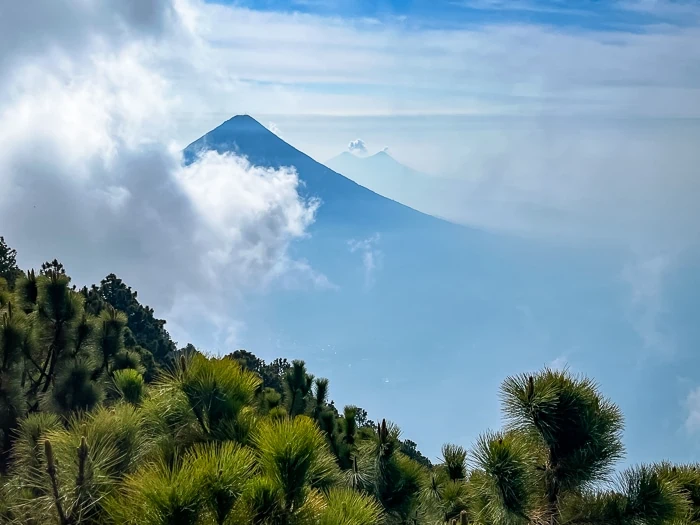
Volcan Acatenango hike difficulty
The Acatenango Volcano hike is generally considered a challenging hike. Many people describe it as grueling, brutal and the hardest hike they’ve ever done. I personally didn’t find the hike super challenging. I’d say that for anyone who’s used to hiking, has a reasonable level of fitness and trains a little bit for Acatenango in advance, this hike is totally doable.
The trail is quite steep and uphill almost the entire way but it’s not too strenuous because you’ll take a lot of breaks and hike pretty slowly if you’re with a tour group. And in case you do find it hard, you can always hire a porter to carry your backpack or you can slow down your pace.
To physically prepare yourself for the hike, I recommend doing leg workouts, going on walks with a heavy backpack and doing some of the easier hikes in Guatemala, such as Pacaya or the Indian Nose hike (a must-do hike at Lake Atitlan).
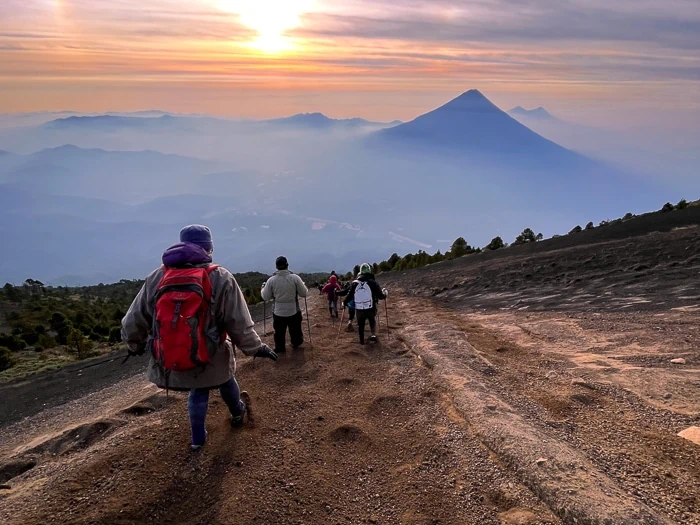
Also, you should acclimatize yourself to the altitude before climbing Acatenango to reduce the chances of getting altitude sickness. Spend at least 48 hours in Antigua, Guatemala City, Lake Atitlan or any other place with a similar altitude (1,500m/4920ft) before the hike.
If you’re prone to getting altitude sickness, bring medication from your home country to mitigate that. Otherwise, being acclimatized, staying hydrated and avoiding alcohol and caffeine before the hike should be sufficient for most people to handle the elevation.
Tip: If you think hiking Acatenango is too big of an endeavor for you, it is also possible to get almost to the base camp of the volcano by a 4×4 car with this tour.
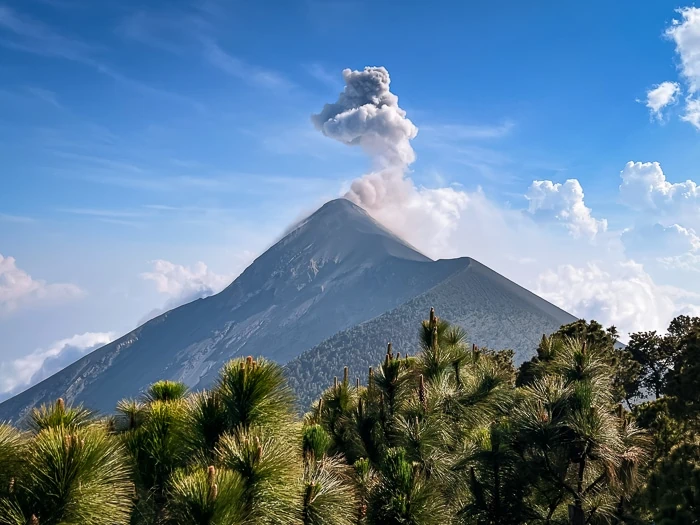
Best tour options for the trek
Since the Acatenango trek is one of the most famous volcano hikes in Guatemala, there are numerous tour companies offering guided overnight tours, most of them based in Antigua.
The tours usually include transport, food and hot drinks, cabins or tents with sleeping bags and sometimes even equipment rental. Also, some tours include the 110 GTQ park entrance fee whereas others ask you to pay that at the volcano.
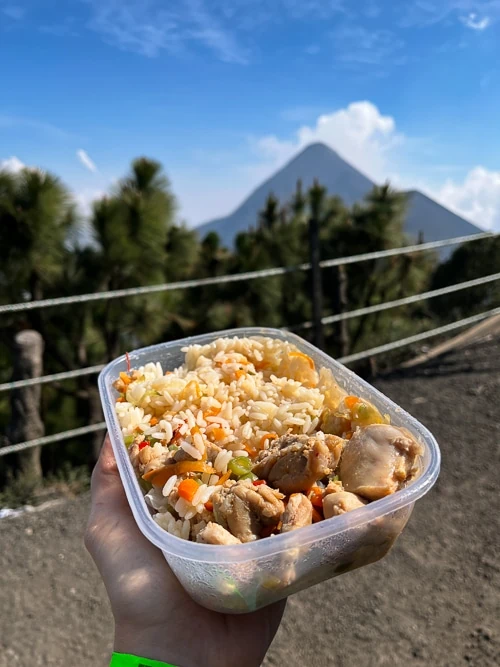
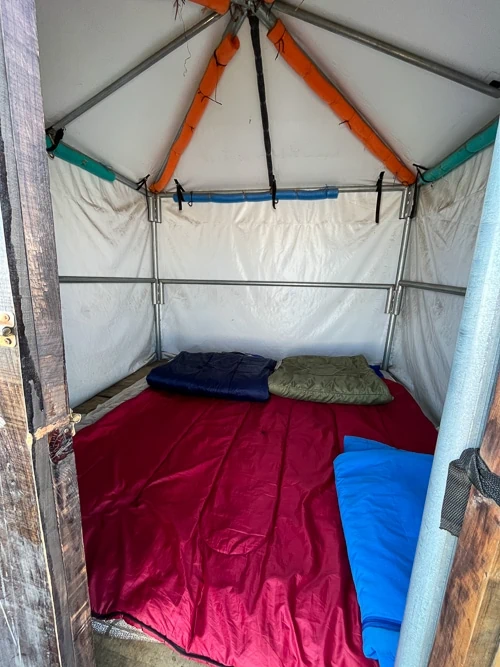
On most tours, once you reach the base camp, you can also do the additional Fuego Volcano hike if you have the energy. The hike to Fuego and back is a 5.5km (3.4 mi) round trip and will give you a close-up view of the volcano if the sky is clear. It usually costs 200-300 GTQ extra.
Here are the Acatenango hike tours I recommend and the tour that I did:
Acatenango tour with OX Expeditions: This is the classic 2-day, 1-night tour with one of the most reputable tour companies in Guatemala. Their camp has comfortable wooden cabins with a volcano view and you can rent gear like backpacks and warm clothes for free. They also organize a meeting the day before the tour to give information about everything you should bring and what to expect.
Acatenango tour with V-Hiking: This is the tour I did. Overall it was a great experience – the cabins and sleeping bags were comfortable, the camp had a nice view and the food was decent. What I didn’t like though was their time management. On day 2 we almost missed the sunrise from the summit because our group was moving so slowly.
Acatenango Glamping tour: If you don’t like the idea of sleeping in a basic tent or a cabin, you have the option of staying in a comfortable spacious glamping tent with a proper bed instead. It’s the only camp of its kind on Acatenango.
One-day tour: As I said earlier, if you’re short on time you can do the Acatenango day hike. I definitely recommend the overnight tour instead but if you can’t fit it into your travel plans, doing the day hike is better than not doing the hike at all.
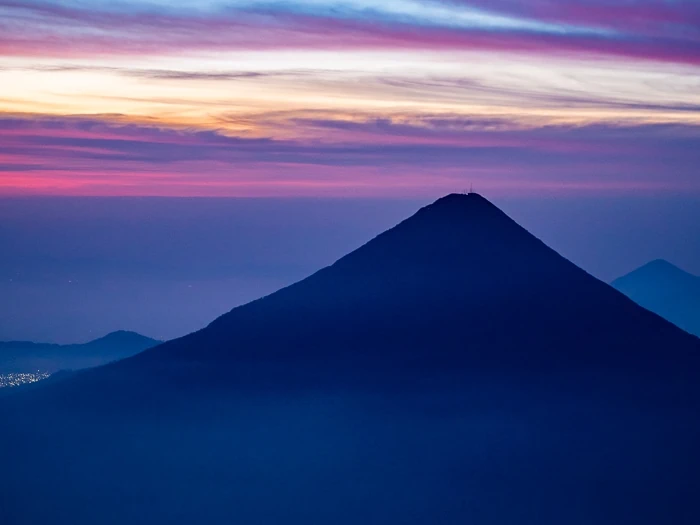
Itinerary for the Acatenango overnight hike
Below I’m describing what you can expect on each of the days of the hike. The exact itinerary can vary a bit depending on the tour company but in general, all the Acatenango Volcano overnight hike tours follow a similar schedule.
Day 1: Trek to base camp and Fuego
You will either be picked up from your hotel in Antigua or you will meet at the tour company’s office early in the morning. Then you’ll drive for one hour to La Soledad where the Acatenango trailhead is located. Before starting the hike, you will usually also have breakfast in a nearby restaurant or, in our case, at the tour operator’s house.
The trek up to the base camp takes 5-6 hours. Since it’s a popular hike, you can expect to see lots of people on the trail. Along the way, there are a few vendors selling snacks, soft drinks and even alcohol in little makeshift kiosks.
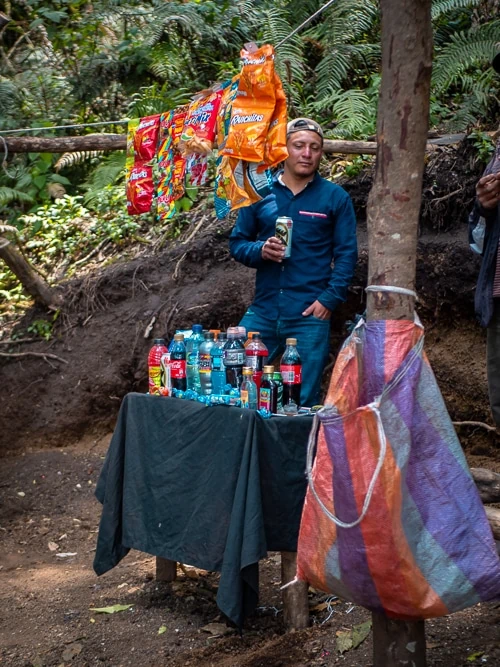
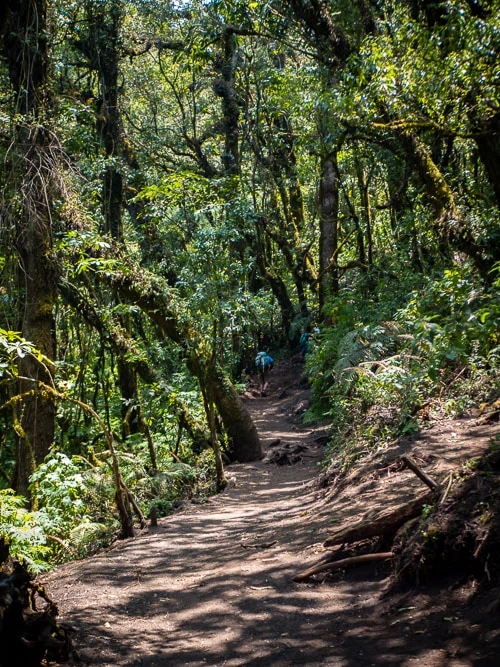
What makes the ascent to the base camp interesting is that the scenery is changing all the time. You will hike through four different ecosystems – farmland, tropical cloud forest, high alpine forest and finally, volcanic terrain. The cloud forest with its lush moss-covered trees and humid air was definitely my favorite part.
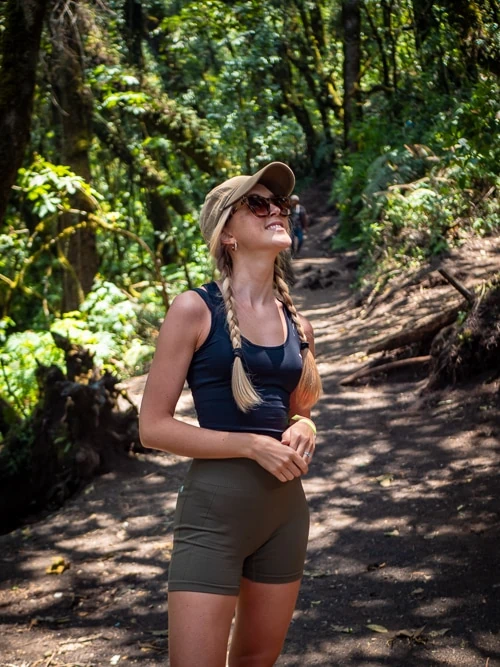
As you get closer to the camp, the terrain flattens, the vegetation becomes more sparse and you’ll get your first glimpse of Volcan Fuego. It’s an exhilarating moment that will make all the effort worthwhile!
You will arrive at your camp at around 3pm. Now it’s time to relax, have lunch and take in the magical view of Fuego spitting out plumes of smoke.
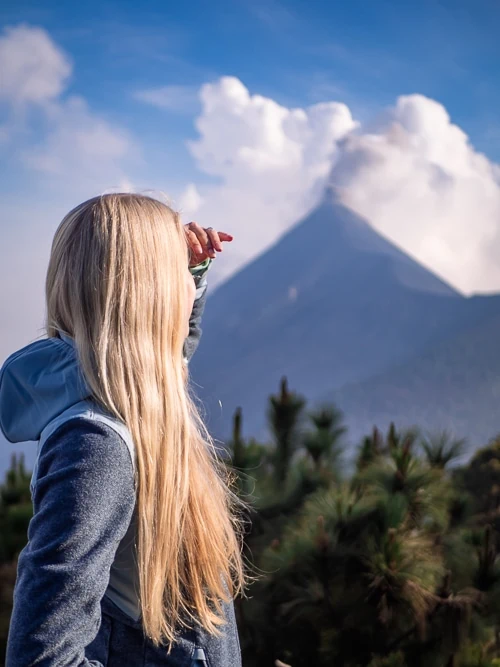
In the late afternoon or evening, those who want can hike to Fuego with a guide. It’s about a 3-hour round trip hike from the base camp but is much steeper than the hike to Acatenango. On the other hand, you won’t be carrying your heavy backpack so in that sense it’s easier.
We did the Fuego hike but unfortunately didn’t get any views of Fuego while we were on it because it got completely wrapped in clouds just when we arrived there. Thankfully, the sky cleared up and Fuego revealed itself again when we got back to base camp.
As the night falls, it’s time to sit back, have dinner and enjoy the best part of this whole hike – watch Fuego spew out glowing red lava into the dark sky. It’s a bucket-list-worthy moment and a surreal experience to see a volcano erupt in front of you!
While it’s tempting to stay up all night to watch the lava show, it would be wise to get some sleep before the early alarm on Day 2.
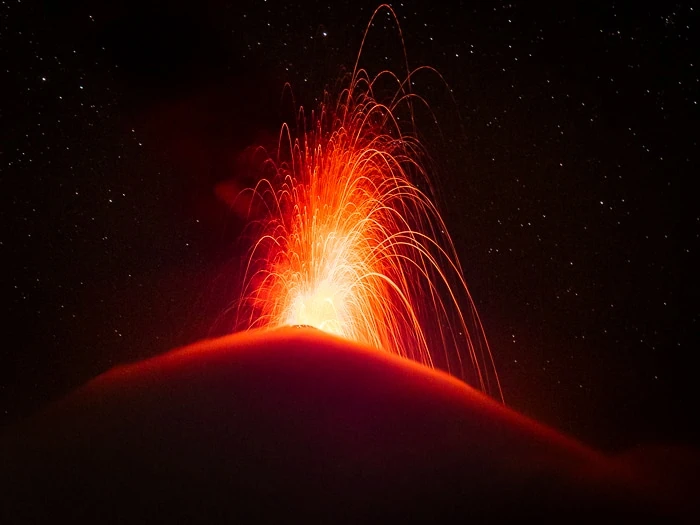
Day 2: Trek to Acatenango’s summit and back down
You will wake up at 3.45am and get ready to hike to the summit of Acatenango to be there by sunrise. This portion of the hike is by no means mandatory and you can just wait in the camp if you don’t feel like doing it.
The hike from the camp to the summit takes 1-1.5 hours and you’ll be walking on loose volcanic gravel up a steep slope. Some people consider this the hardest part of the entire Acatenango hike. I didn’t think it was too bad though because you won’t have to carry your heavy backpack there.
As we climbed up the volcano, the sky started turning pink and lighting up the landscape around us. Once at the summit, we were rewarded with a spectacular view of the perfectly conical Agua volcano and Fuego volcano erupting in the golden glow of the sunrise.
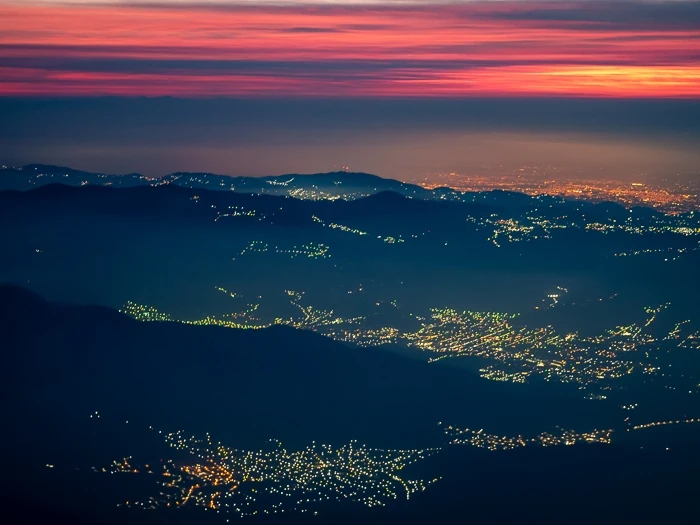
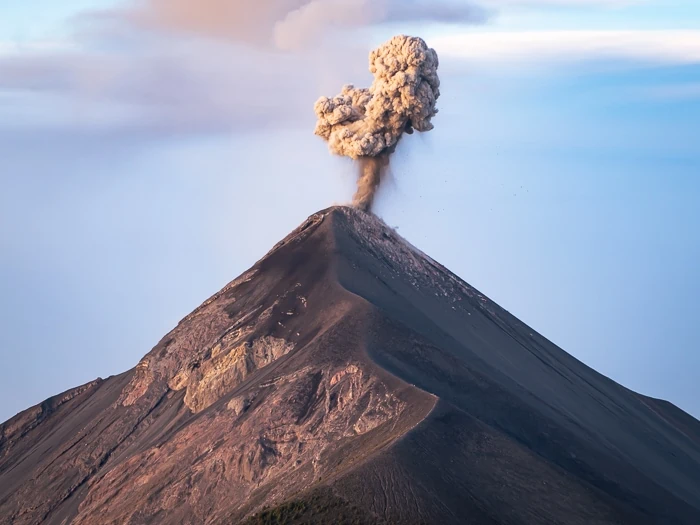
Then it was time to hike back down to the camp, have breakfast, pack up our stuff and start the descent to the base of the volcano.
The hike down takes about 2.5 hours. It’s much easier than the hike up because you won’t be carrying the weight of your food and water but it can be a bit hard on the knees. Once down, your van will pick you up and you’ll be back in Antigua at around 1pm.
Best time to hike Acatenango
The best time to hike Volcan Acatenango is from November to April, which is the dry season. During these months, you’re more likely to have clear views and no rain. December to February are the clearest but also the coldest months.
With that said, Acatenango tours run all year round and you can definitely climb it during the rainy season. There is just a higher risk that the clouds will cover the view and you won’t see Volcan Fuego as much. You’ll spend so many hours on the volcano though that there’s a good chance the clouds will clear up at some point during your trek.
We did the hike in April and had great weather with no rain and only occasional clouds. At the start of the hike, it was 23°C (73°F) and it got gradually colder as we ascended. At night, the temperature dropped to about 0°C (32°F).
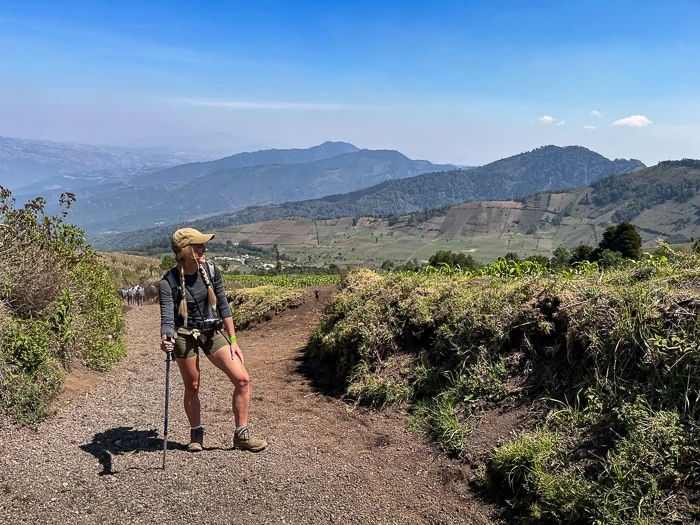
Acatenango Volcano trek map
To get an idea of where the Acatenango trail starts and where the base camp and summit are located, take a look at the map below. Click on the icon in the top left corner of the map for more details.
Practical tips for hiking Acatenango and Fuego
Bring layers of clothes: You might want to start the hike in shorts and a T-shirt (depending on the weather) but as you get to higher elevation and cool down from the hike, you’ll need a lot more layers. I ended up wearing a Merino wool shirt, fleece, light down jacket, leggings, pants, woolen socks, scarf, beanie and gloves. Bring also another pair of socks, a rain poncho/jacket and a bandana to protect your face from the dust.
Wear proper shoes: Worn-in hiking boots are best but trainers will also work (but their grip is not as good).
Bring a backpack: It should be at least 35 liters and you can usually rent it from your tour company. Leave your other luggage in the tour company’s office or your hotel.
Other gear to bring: Headlamp (for the Fuego hike and the sunrise); power bank, lightweight tripod (to take photos at night) and sunglasses.
Hiking poles: You can usually rent a walking stick or hiking poles for a very low price from your tour operator or from locals at the trailhead (about 10 GTQ). They help a lot with stability and grip on the loose gravel.
Bring a plastic bag: It’s for your waste. Everything you bring up to the volcano you also need to bring down. It can also be useful for storing wet clothes.
Water: The general recommendation is to bring 3-4 liters per person. There’s no water on the way (apart from a few vendors that may or may not be there) or at the base camp so you have to bring what you need.
Snacks: Although meals are usually included in the tours, you’ll probably want to have some extra snacks such as nuts, muesli bars, cookies etc.
Toilets: There are proper toilets near the start of the trail but at the base camp they are very basic and without running water. Bring your own toilet paper and hand sanitizer.
Toiletries: Remember to bring your toothbrush, toothpaste, wet wipes, lip balm (the air is very dry up there), sunscreen.
Cash: You’ll need it in case you want to hire a porter (200 GTQ one way), pay for the toilet near the start of the trail (5 GTQ), pay for the park entrance fee (110 GTQ unless it’s included in your tour) or buy snacks from vendors along the trail.
Altitude sickness: Bring altitude sickness pills if that gives you peace of mind, preferably from your home country because you usually need a prescription for it. Or just stay in Antigua 48 hours beforehand to acclimatize and avoid alcohol and caffeine before the hike.
Dogs: There are lots of friendly stray dogs living on Acatenango volcano. You might want to bring dog treats for them.
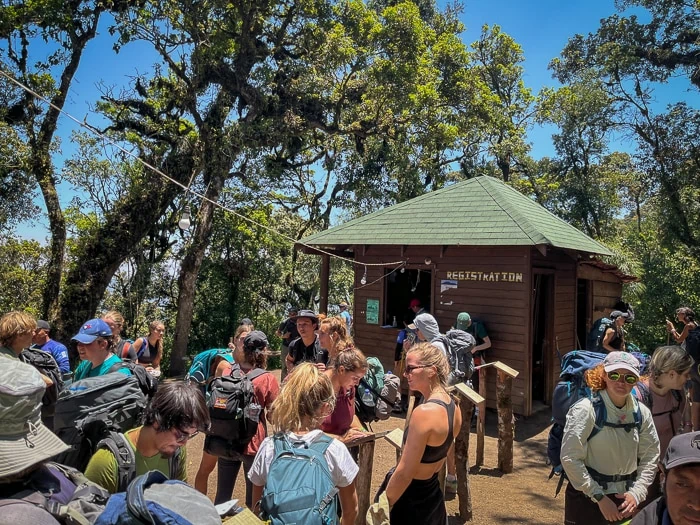
Where to stay before and after the hike
Almost all Acatenango tours start and end in Antigua, so I recommend staying there before and after the trek. It’s a really charming historical town with lots to see and do.
Here are the hotels in Antigua I recommend:
BUDGET & MID-RANGE: Barbara’s Boutique Hostel
A small hotel in a lovely historic building just a 10-minute walk from the center of Antigua. It has both private rooms and shared dorms. There’s also a shared kitchen and a small rooftop and they serve free cake every day!
LUXURY: Hotel Casa Santo Domingo
This is Antigua’s most famous 5-star hotel. I spent two nights here and it exceeded all my expectations. The hotel has a really unique ambience as it’s set in the ruins of an old convent. Also, there’s an amazing spa where you can pamper your sore body after the hike.
If you want to know more about what to expect when staying at this iconic hotel, read my detailed review of Hotel Casa Santo Domingo.
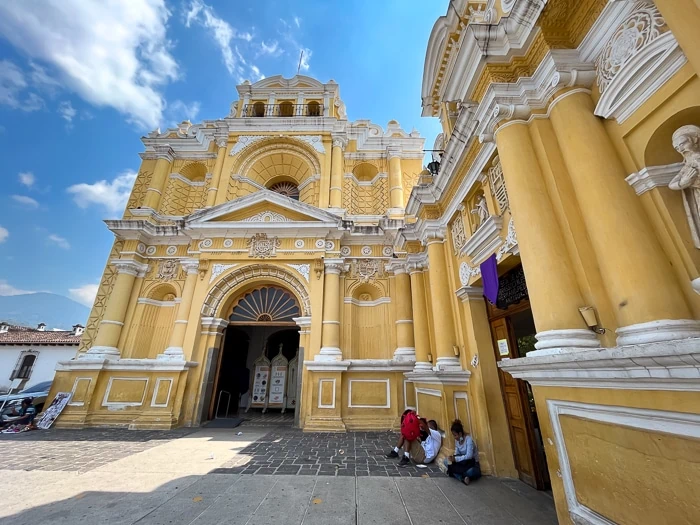
I hope that this post convinced you to add the Acatenango Volcano trek to your bucket list because it’s an experience you really shouldn’t miss in Guatemala!
If you have any questions about the hike, feel free to leave them in the comments and I’ll get back to you.
Be sure to also read my other Guatemala travel guides to plan the rest of your trip:
- The perfect 10-day Guatemala itinerary
- How to visit the Mayan ruins of Tikal
- Guide to visiting El Paredon
- 12 best places to visit in Guatemala
- Indian Nose sunrise hike at Lake Atitlan
Enjoyed reading about the Acatenango hike? Pin it!
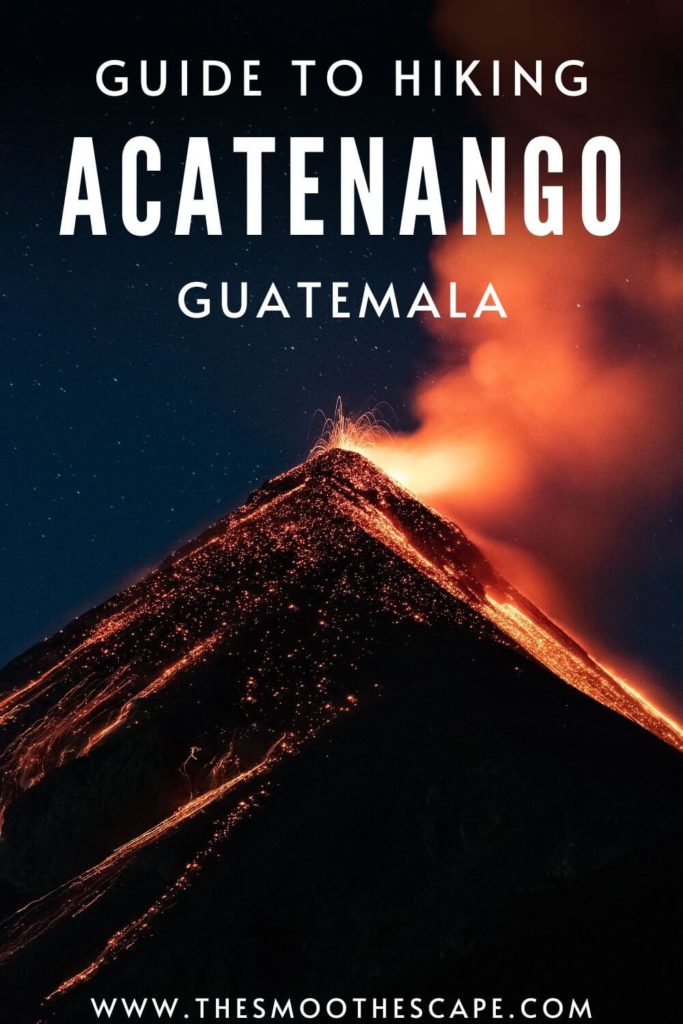
READ MORE:

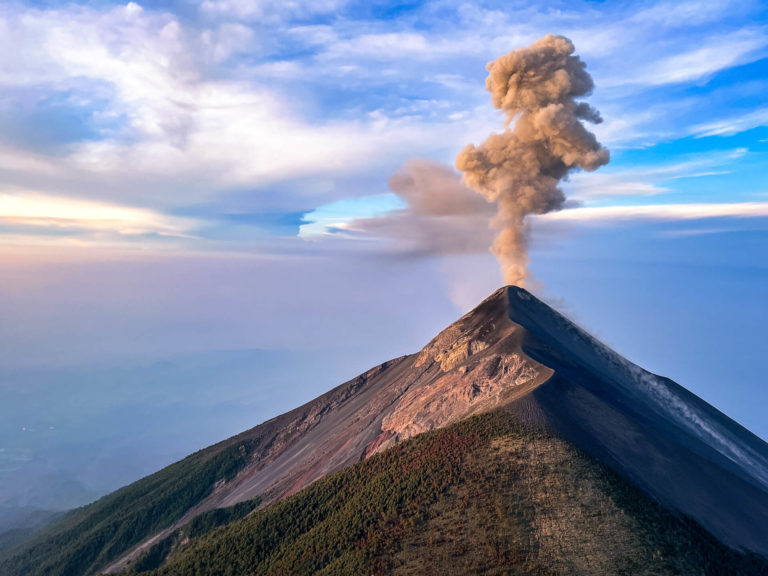
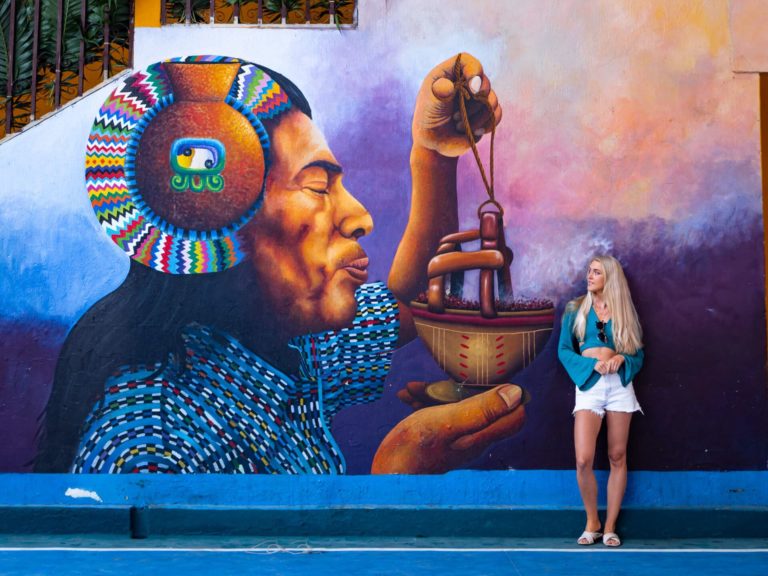
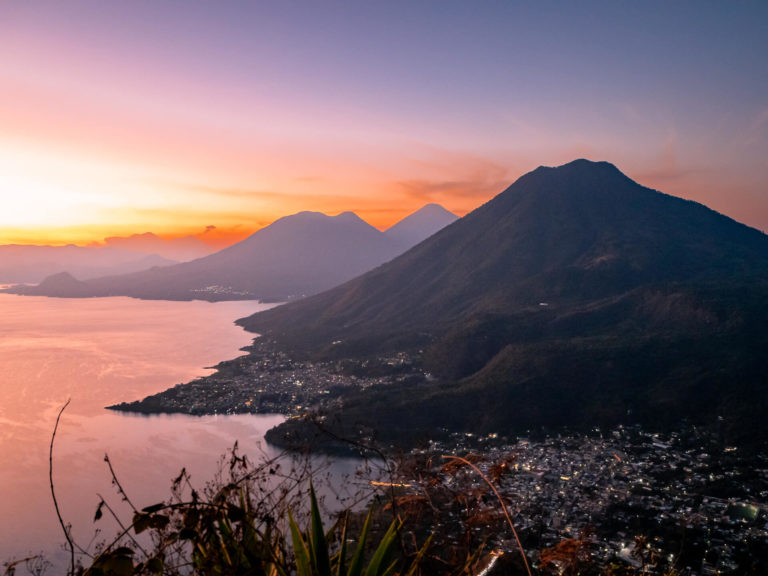
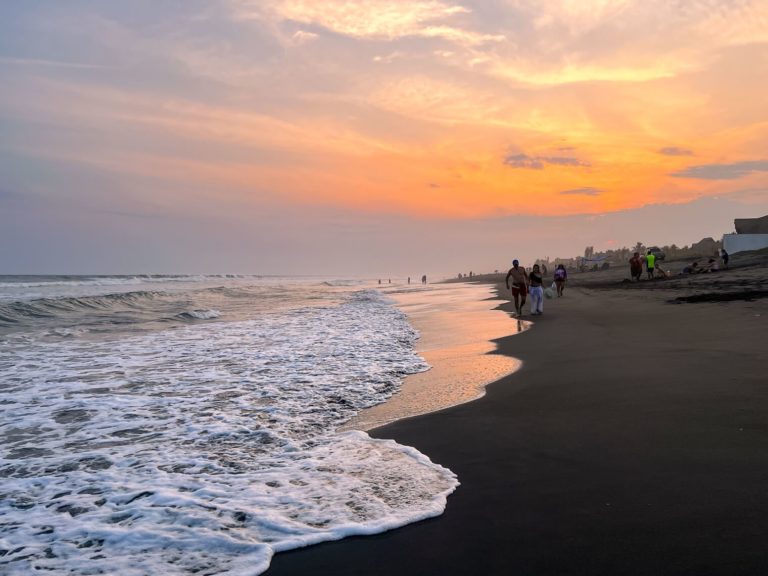
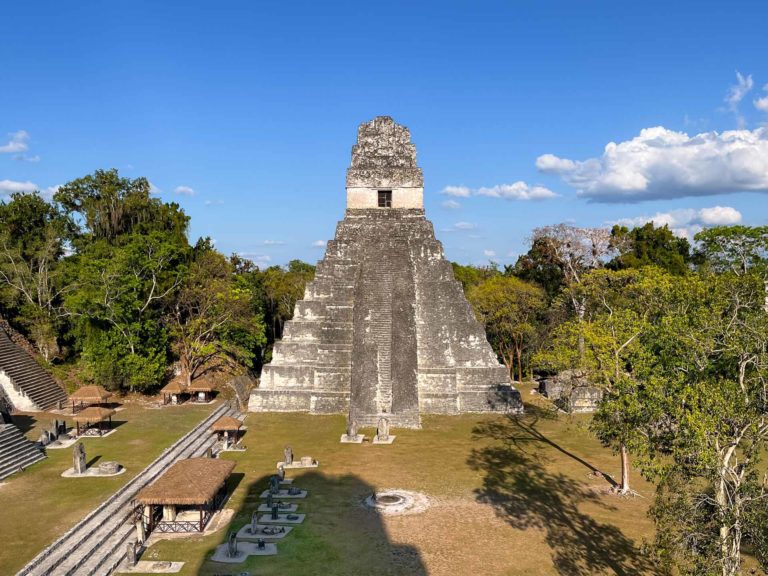
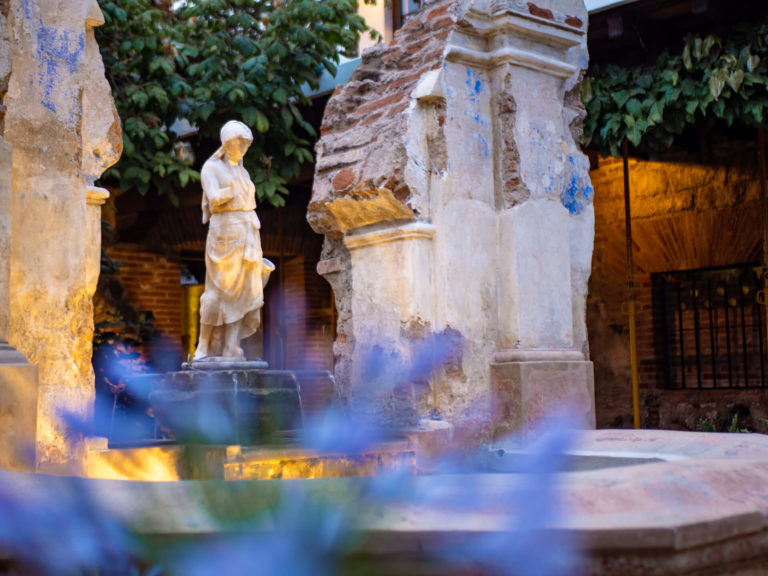
Great report of Antigua